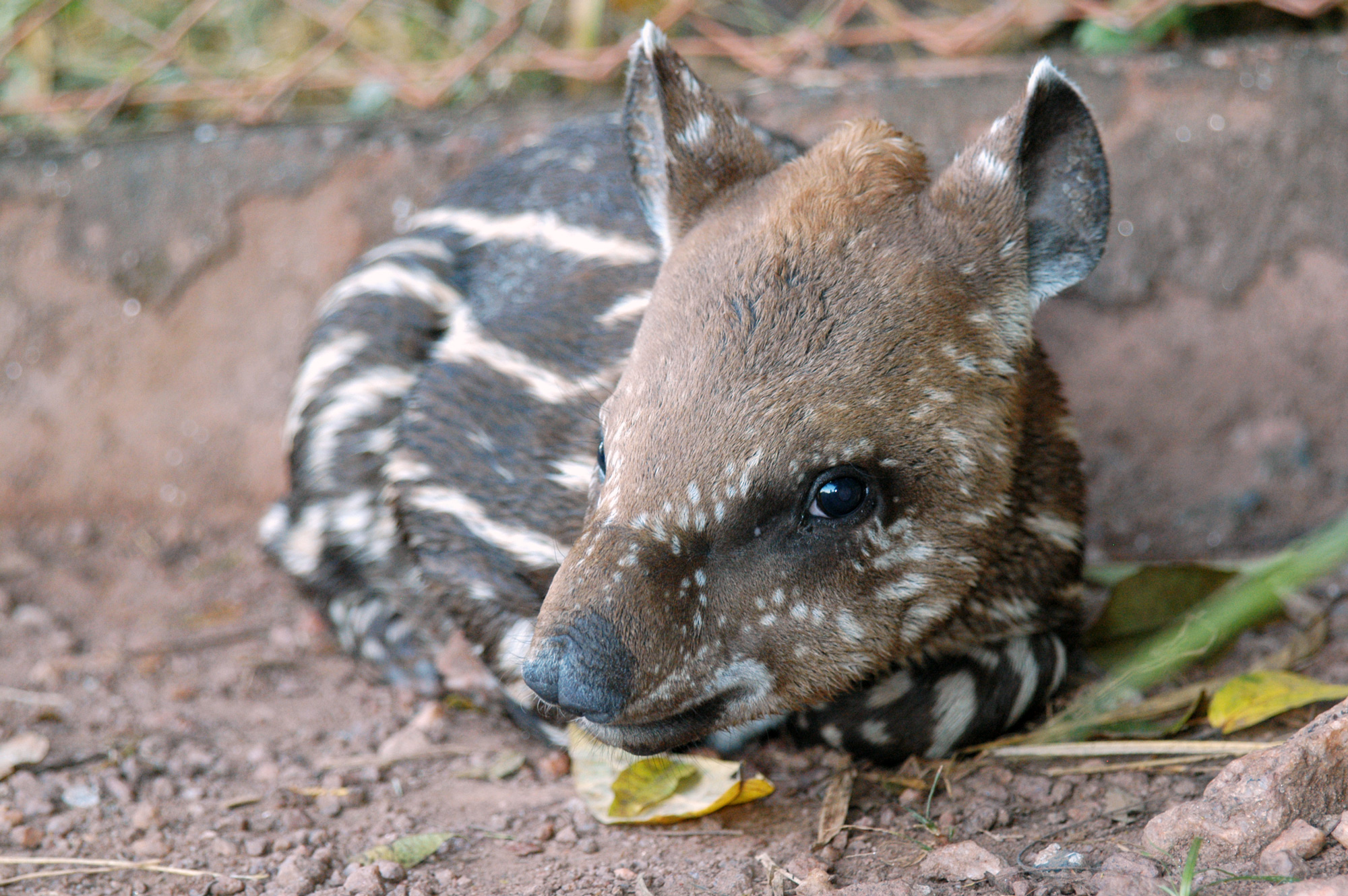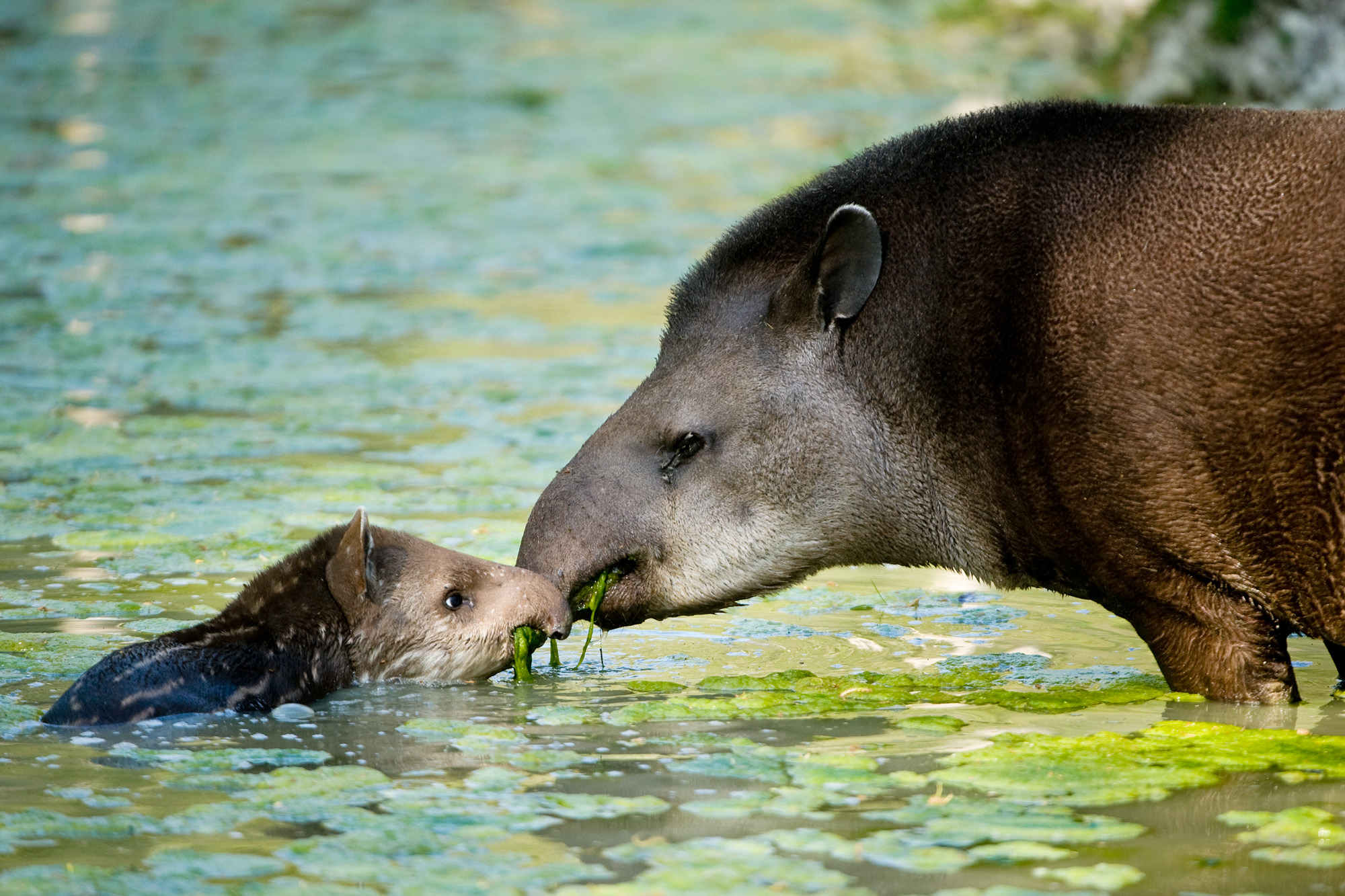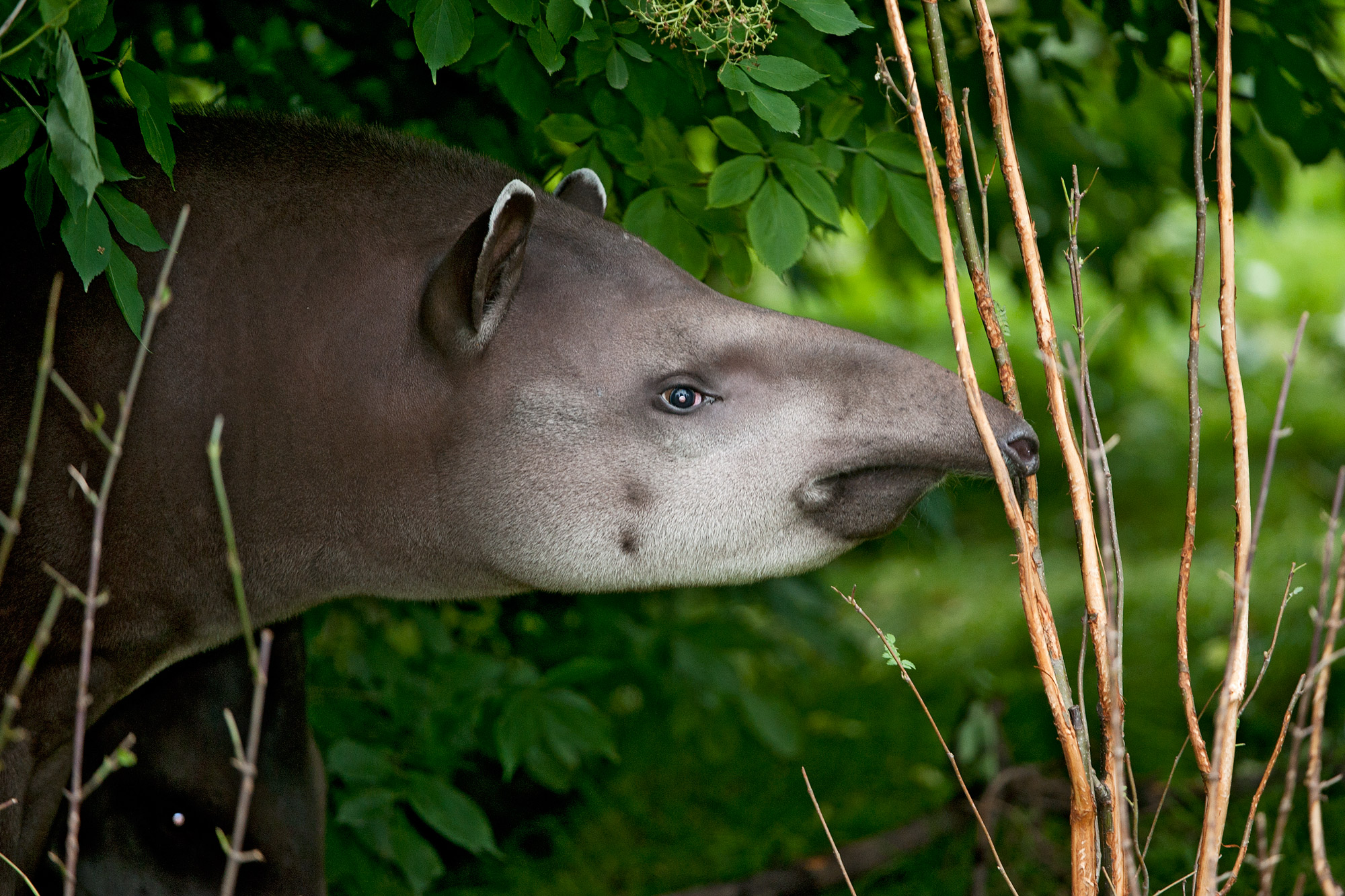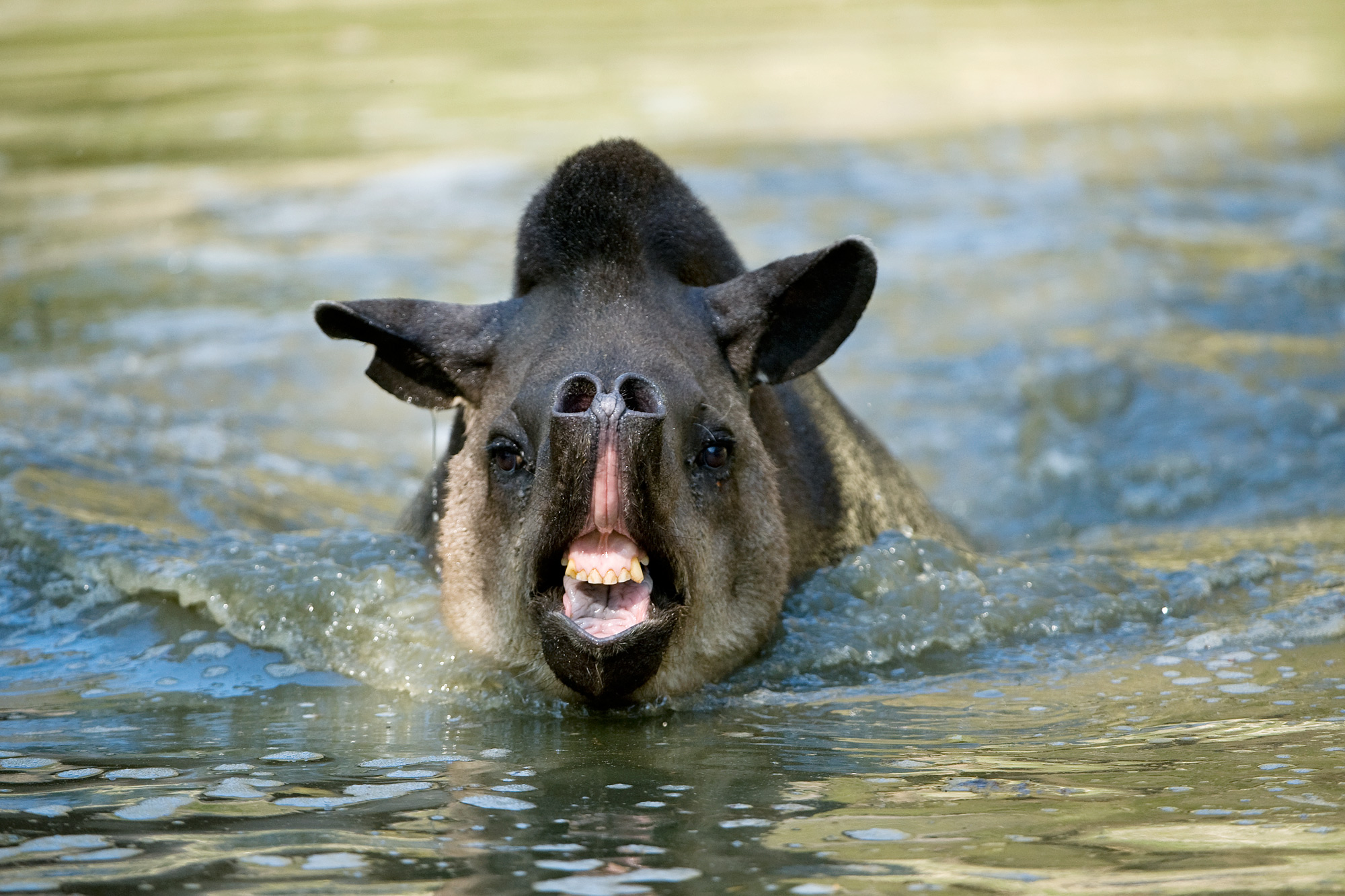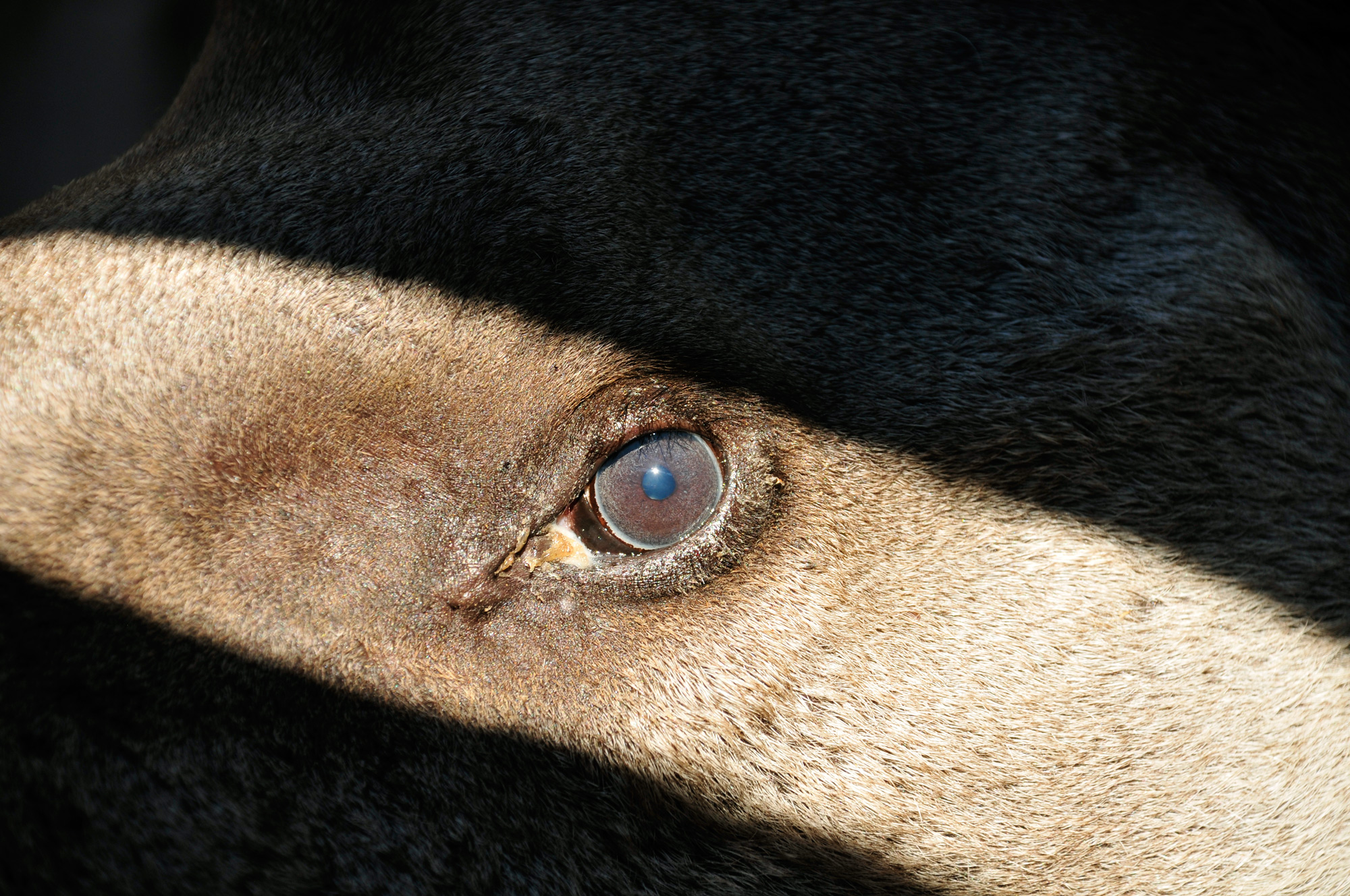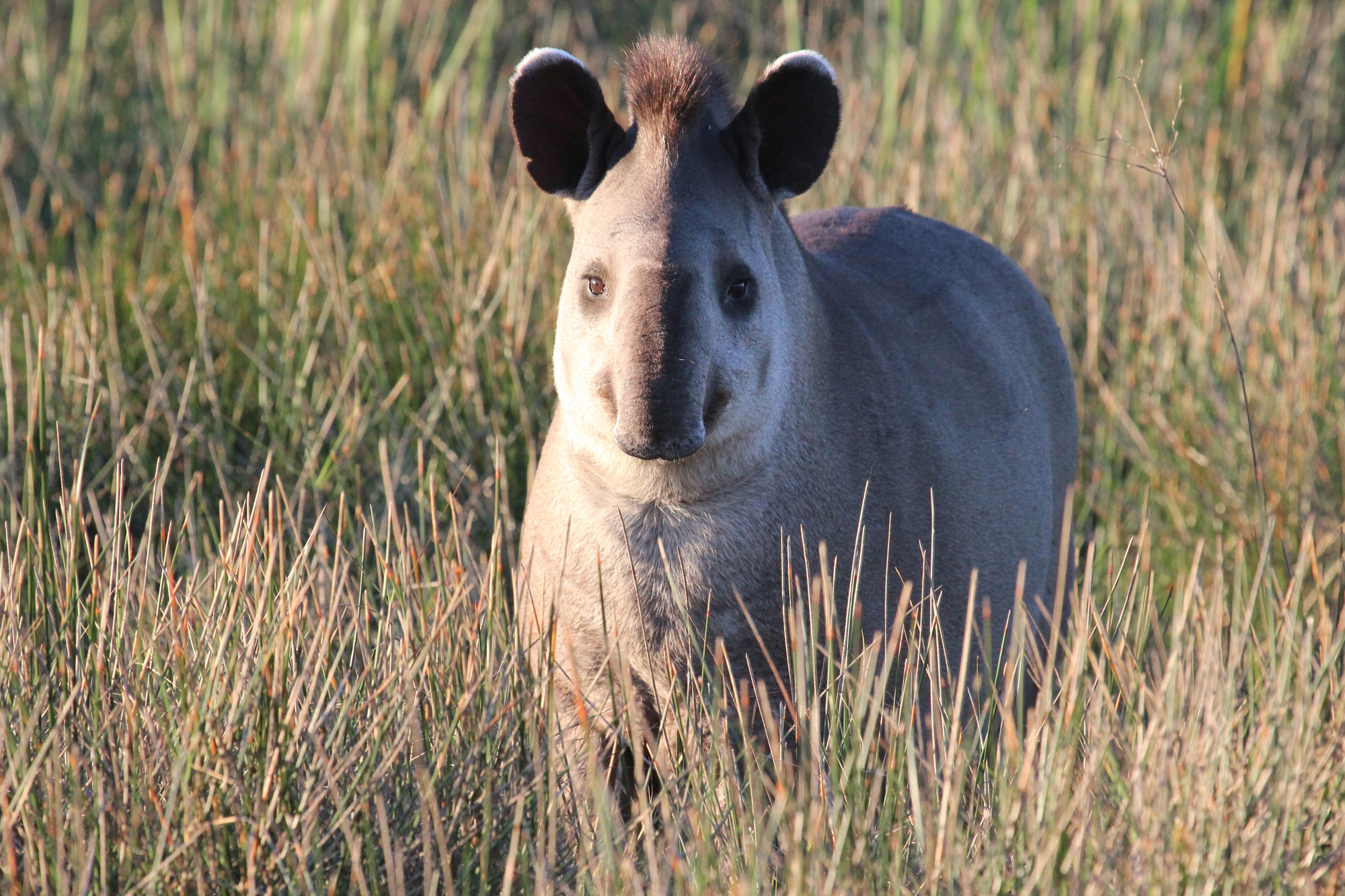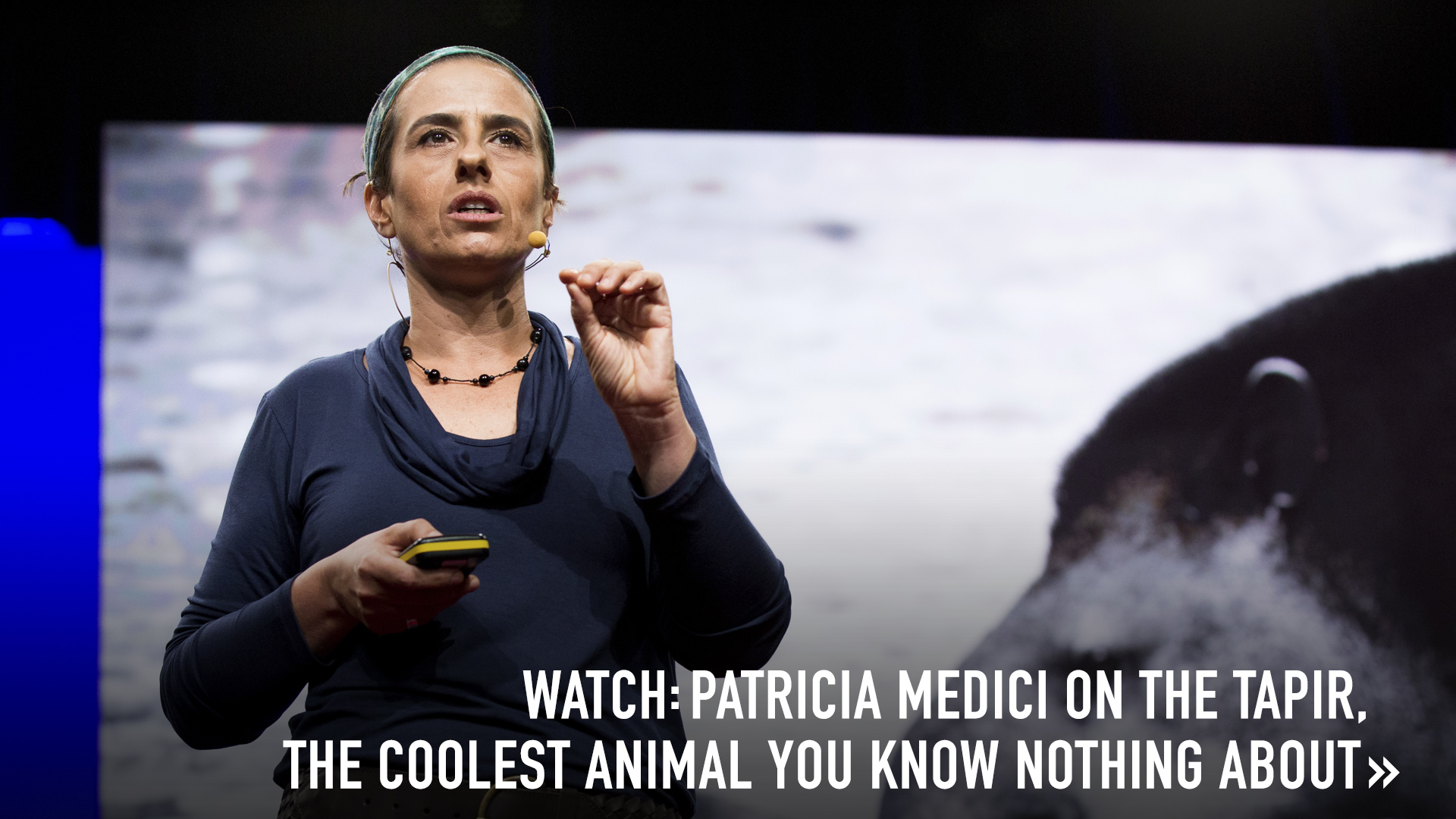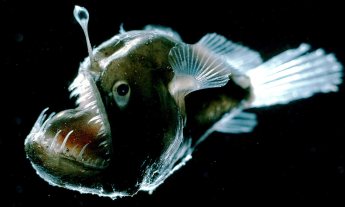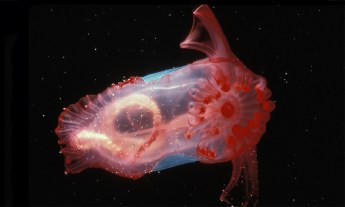Chances are, you don’t know much about tapirs. Don’t feel bad; neither do scientists. Even though tapirs are the largest land mammals in South America, known as “gardeners of the forest” for their habit of eating (and dispersing) large quantities of fruit and seeds, little is known about these solitary, mostly nocturnal creatures. TED Fellow and conservationist Patricia Medici (TED Talk: The coolest animal you know nothing about … and how we can save it) is on a mission to change that, through her work with a Brazilian non-governmental organization called the Instituto de Pesquisas Ecológicas (IPÊ) and the IUCN/SSC Tapir Specialist Group. Here she shares photos of the lowland tapir, and explains why these elusive creatures provide far more than just your day’s “awww, cute!” moment.
The stripy camouflage of the baby tapir
Tapirs have a gestation period of 13 months. After giving birth, mothers hide their offspring for almost a month in thickly forested areas, often using a thorny bush called the caraguatá as a hiding spot. The calves’ spotted, stripy coat (which they grow out of) further camouflages them from predators such as jaguars and pumas. Calves won’t stay small for long; during their first two years of life, they grow at an astonishing rate, gaining two to three kilograms each week. Photo: Liana John.
The mother/baby tapir bond
Tapir calves stay close to their mothers when they’re first born, and mothers are fiercely protective of their young. (Tapir dads don’t stay in the picture, says Medici.) After about six months, the age of the calf shown here, young tapirs start to explore their surroundings on their own, and at a year and a half, they head off on their own, though exactly where they go after their leave their mothers is still unknown. Finding out where they go — and why — is central to Medici’s research, and it may help suggest new ways to protect tapirs. Photo: Daniel Zupanc.
Tapirs as living fossils
The first recognizable tapir ancestor roamed the earth nearly 50 million years ago, while the tapir we know today is believed to have appeared some time between 5 and 25 million years ago, earning it another nickname: “the living fossil.” Nonetheless, it’s been listed as an endangered species since 1970. Today, the animals are threatened by poachers, who hunt them for their meat and skins, habitat fragmentation and the pollution that’s rampant in quickly industrializing Brazil. “Tapirs are beautiful animals that have been around for such a long time,” Medici says. “We do not want to be responsible for their extinction.” Photo: Daniel Zupanc.
At home on land and in the water
Tapirs love to spend time in the water, and they are even known to fall asleep while submerged. Because they can grow to be so large, sometimes reaching weights of nearly 400 kg, and because of the sweltering heat in South and Central America, they use water to keep cool. And while their diets mainly consist of fruit and berries, they do sometimes snack on aquatic plants. Photo: Daniel Zupanc.
A probing proboscis
One of the most distinctive features of the tapir is its proboscis, or snout. Highly flexible, it’s used to grab food such as leaves, berries and fruit. A tapir with a raised proboscis, like the one pictured here, is either trying to smell something or is showing its teeth as a sign of aggression. Photo: Daniel Zupanc.
Blind as a tapir
Tapirs have very poor eyesight, and they often develop cataracts due to excessive exposure to sunlight. What they lack in eyesight they make up for in smell and hearing, both of which are exceptional. “Often we can see them before they see us,” Medici says. “But they can smell us before we see them.” Photo: Patricia Medici.
A keystone species
Tapirs help shape and maintain biological diversity in the areas they inhabit, which can include forests, grasslands, floodplains and even high altitude environments. Because of the large amount of fruit and seeds they eat and distribute across vast distances, they contribute significantly to plant life and, as a consequence, play a key role in important ecological processes. “If tapirs go extinct, forests will be very different, less diverse, and, most certainly, less productive,” Medici says. Photo: Jason Woolgar.
Conservation efforts
Tracking tapirs has always been difficult — they’re predominantly nocturnal, and they grow too quickly to use traditional tracking collars without causing them harm. Using new, expandable tracking collars, Medici and her colleagues are gaining a better understanding of the extension of tapirs’ home ranges. With this data, they discovered that while tapirs are solitary, their home ranges overlap, meaning they aren’t territorial. Tracking data also helps researchers keep an eye on pregnant females and gain a better understanding of threats to tapirs’ survival. This, in turn, helps them develop conservation strategies to maintain adequate habitat for them. Photo: Patricia Medici.

